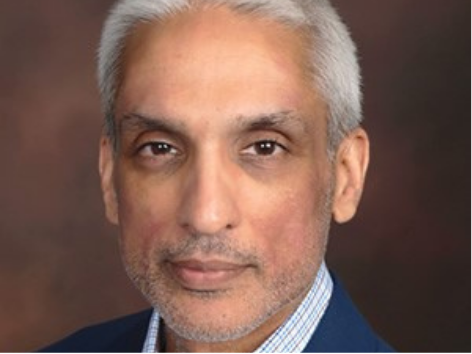The enduring threat of domestic terrorism
The Biden administration has rightly prioritized domestic terrorism as the number one counterterrorism concern in the United States, as evidenced by the release of the first-ever national strategy on the topic and a series of measures and initiatives rolled out by various departments and agencies over the recent months. If the United States is in the middle of a “fifth wave” of terrorism, as I argued earlier this year, it has not yet reached the “peak” of this new wave of domestic terrorism. Given that previous waves lasted twenty to forty years, we need to prepare as if future attacks will intensify in scope or lethality before this fifth wave recedes.
In March of 2021, the Office of the Director of National Intelligence established an analytic framework to examine the domestic terrorism landscape in the United States, looking at racially or ethnically motivated violent extremists, anti-government extremists, and single-issue extremists. Real-world events have underscored this diversity across a broad ideological spectrum, posing challenges for law enforcement and the intelligence community when it comes to detecting signs of preoperational behavior and preventing attacks before they occur.
The large number of current domestic terrorism investigations by the FBI nationally goes well beyond just those under investigation for the January 6, 2021, insurrection at the US Capitol. This indicates that there is a large pool of individuals in the United States who are somewhere on the spectrum between radicalization and mobilization, some of whom could act out violently based on any one of a number of ideologies and beliefs. The size of this pool has been driven by the confluence of several factors that have not subsided in intensity in the aftermath of January 6. These include:
- Anger over restrictions imposed in response to the COVID-19 pandemic because of outbreaks associated with variants of the coronavirus that causes the disease and inconsistencies with respect to vaccination rates and other public health measures across the country.
- The use of social media platforms to share violent extremist beliefs and ideas, misinformation, and disinformation, despite recognition of and efforts to dismantle this dynamic by major social media platforms.
- Ongoing efforts by some politicians, thought leaders, and foreign adversaries to stoke political and cultural divisions in the United States related to previous grievances like the disputed results of the 2020 presidential election or new flashpoints like critical race theory.
- Changing social mores and racial and ethnic demographic shifts across the country, which further alter the landscape of a “traditional” American identity and who we are as a nation.
More than a year and a half since the start of the COVID-19 pandemic, the disease continues to have profound effects. Anger over restrictions imposed in the spring of 2020 was a key driver of a brazen plot to kidnap Michigan Governor Gretchen Whitmer. More than a dozen people face a combination or federal or state charges in the case. As virus variants spread despite aggressive vaccination efforts and other public health measures, concerns over additional lockdowns or government-imposed mandates curtailing the ability to work, go to school, travel, or socialize will very likely serve as the basis for some to view violent action as justified.
Social media platforms—both mainstream and those in the farther corners of the Internet—provide the virtual spaces where individuals can share, discuss, and promote violent extremist beliefs and ideas all under the cloak of the First Amendment. Unless companies have the personnel, resources, technological capabilities, and corporate leadership to establish and enforce their existing terms of service, the federal government’s ability to further regulate and moderate this activity is limited.
The extent of sophisticated and charged misinformation and disinformation campaigns—both on social media but also through mainstream news outlets—about political and cultural issues sometimes only deepens prevailing divides and further creates an “us” versus “them” condition. Currently, these types of campaigns about the dangers related to COVID-19 vaccines, the disputed results of the 2020 US presidential elections, or the divisive aspects of critical race theory and other hot-button issues will very likely feed into ongoing violent extremist narratives and lead to additional plots and attempted attacks.
… There is a large pool of individuals in the United States who are somewhere on the spectrum between radicalization and mobilization, some of whom could act out violently based on any one of a number of ideologies and beliefs.
Shifting demographic patterns in the United States—which appear to be happening even more rapidly than at previous points in the country’s history—will also likely have a profound effect on the domestic terrorism front. This is especially true with individuals, groups, and movements who subscribe to racially or ethnically motivated beliefs, like white supremacists and neo-Nazis, who have long felt that the traditional order of a “white America” is coming apart and that the only way to uphold this order is through violent action. Books published decades ago, like The Turner Diaries and Siege, still hold sway for those who believe in their dark visions of race wars and revolution against the government in order to usher in a new era of white supremacy. Such publications, in print or online, will continue to provide ideological inspiration to the next generation of extremists. These and other factors will propel this “fifth wave” of terrorism for the near future. The Biden administration’s recognition of this threat and its initial efforts to address it provide a good start. As with other waves of terrorism in the United States over the last one hundred years, collaboration, information-sharing, and new partnerships will be key to hindering its effects. This new wave is not an existential threat to the foundation of the country, but it likewise should not be considered a low-level issue implicating only a few stakeholders in or out of government. While audacious events like the attempted plot against Whitmer last year or the insurrection at the US Capitol may be outliers, the more likely pace of attacks will be fragmented, decentralized, and occur with little to no warning by lone offenders or groups of just a few people. Now is the time to put new programs and measures in place to suppress this wave and flatten its trajectory.
* * *

Javed Ali is an associate professor of practice at the Gerald R. Ford School of Public Policy. Ali has more than 20 years of professional experience in national security and intelligence issues in Washington, DC. He held positions in the Defense Intelligence Agency and the Department of Homeland Security before joining the Federal Bureau of Investigation. While at the FBI, he also held senior roles on joint duty assignments at the National Intelligence Council and the National Counterterrorism Center, and the National Security Council under the Trump Administration. Ali holds a BA in political science from the University of Michigan, a JD from the University of Detroit School of Law, and an MA in international relations from American University. He writes and provides commentary across a number of media sites and platforms, including MSNBC, CBS, CNN, ABC, The New York Times, The Washington Post, The Hill, and Newsweek.
Generously Supported By

Explore “The future of counterterrorism” series
Engage with our series as we continue forecasting the future of counterterrorism
Learn more about the Middle East Programs
Learn more about Forward Defense

Forward Defense, housed within the Scowcroft Center for Strategy and Security, generates ideas and connects stakeholders in the defense ecosystem to promote an enduring military advantage for the United States, its allies, and partners. Our work identifies the defense strategies, capabilities, and resources the United States needs to deter and, if necessary, prevail in future conflict.